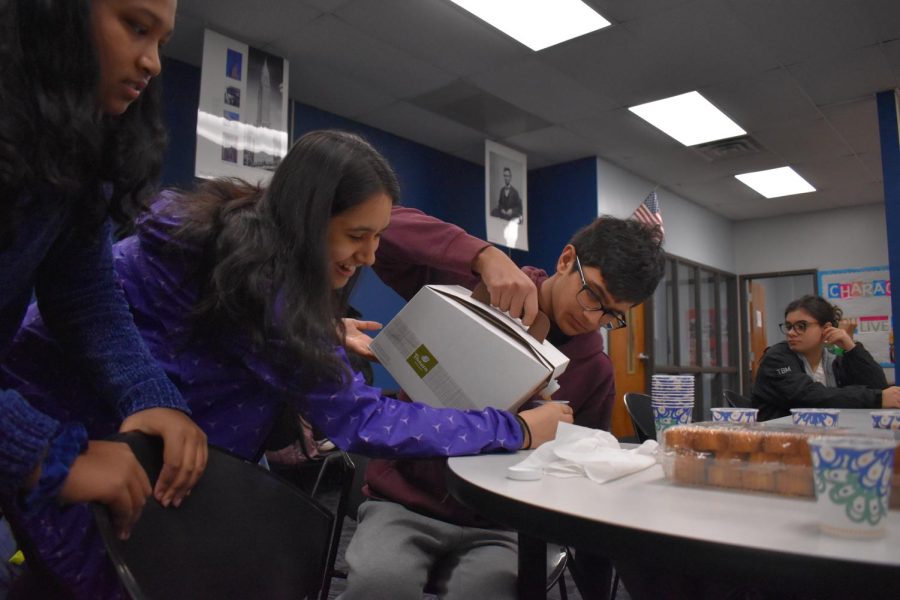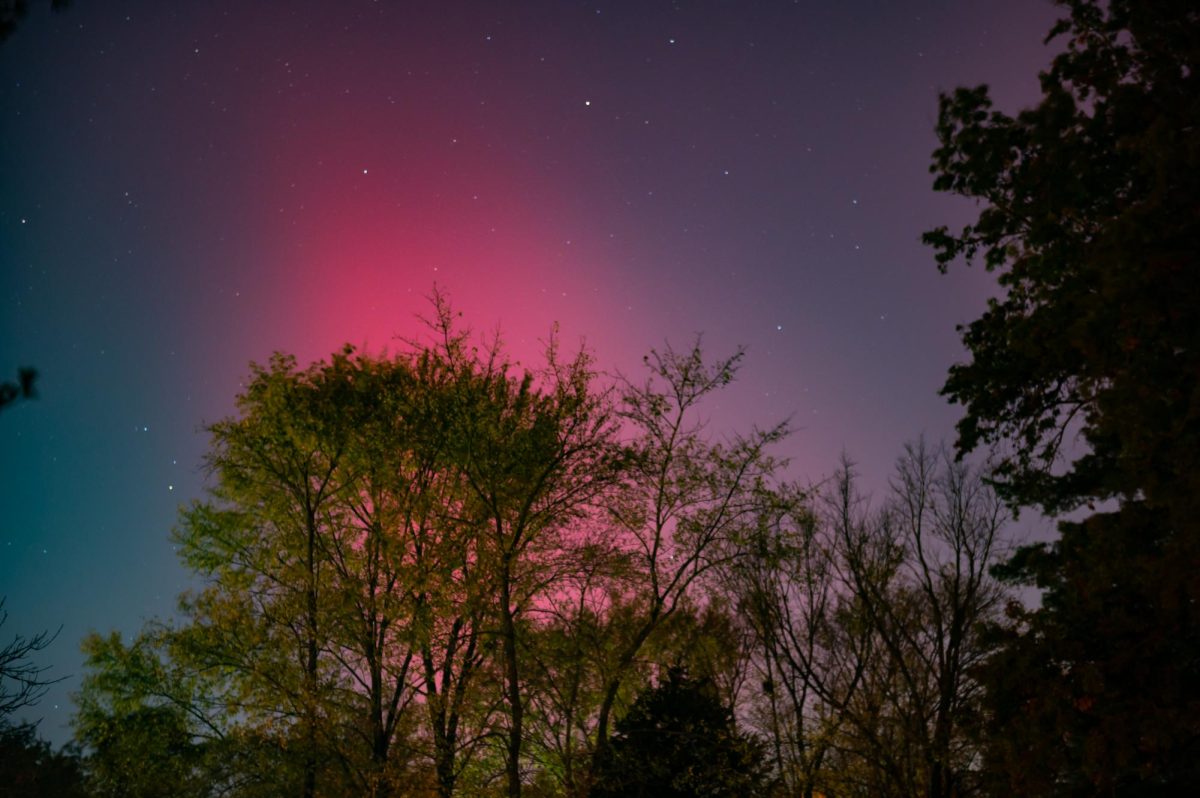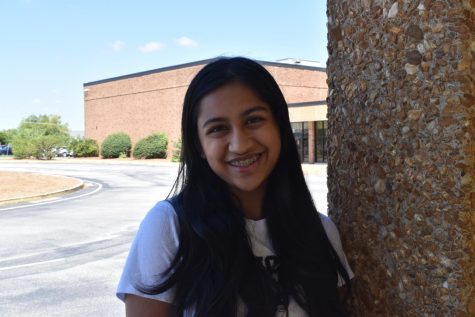Pulling up a slideshow and setting down a tray of samosas, junior and Indian Club founder Puneeta Ganga prepares to present their lesson on chai as people slowly pour into the room.¬Ý
They spent their meeting going over how chai was influenced by the British and its rise to popularity in Indian culture.
Ganga founded the club Oct. 19 with junior and Activities Director Riya Ashok, hoping to give a voice and space to Indian students while allowing others to learn about the country’s culture.
“The purpose of [our] club is to develop a cohesive community where minorities can come together and share aspects of their culture that aren’t talked about much but are important,” Ashok said.
During the first meeting, members drank homemade chai that sophomore and Social Media Manager Samir Shaik brought. Additionally, Ganga and Ashok served traditional Indian biscuits, such as Parle-G, Marie gold and milk rusks.¬Ý
“Everyone was respectful and eager to learn about Indian culture, so it was a very welcoming and warm environment,” sophomore Dima Layth said. “As we tried the chai, we discussed and compared the different types of teas that we’ve grown up with. That’s what I love about the club; it’s an opportunity for all kinds of kids to come together and learn more about each other.”
Ganga spent two months ahead of time planning the club’s agenda, spreading the word and setting up their Instagram account. However, choosing board members took the most time.
“Having good leaders is extremely important because this is a new club,” Ganga said. “I wanted people who took this seriously so the club could thrive and succeed in the future.”
Despite being centered around India, 45% of the club’s members are from varying ethnic backgrounds outside of India.
“Having diversity bolsters this sense of acceptance and community that wouldn’t exist otherwise,” Ashok said. “Everyone is different in terms of how we see the world around us, and having a pool of information and various opinions helps us broaden our scope of opinion.”
The club meets every other Wednesday or Thursday in the history concept center. They hope to not only educate people on the culture of India but also on how the culture varies from region to region.¬Ý
“We take this seriously. For every meeting we plan, we make sure it’s authentic and that we’re not providing false information,” Ashok said. “Instead of taking the easy way out, we’re willing to go out of our way to properly educate people and go in-depth on the roots of South Asian cultures.”
Ganga plans to use the club to bring more opportunities to Indian students and help kids in India threatened with poverty and a lack of education. Through United Young India, Ganga tutored underprivileged kids in India to help them speak English. She hopes to extend this opportunity to Indian Club members.
“I felt happy that I could help them because when I moved from India to America, I had to learn English to fit in, and it was hard. People make fun of you because of your accent or if you don’t speak it like they do. Getting to share the same experience while making [the kids in India] feel validated makes me feel fulfilled,” Ganga said.
The club also hopes to address microaggressions and stereotypes that South Asians are faced with today and discuss how this has affected their members personally
“The [amount of] microaggressions are crazy, and sometimes it’s your people that say these things. Not even that, but some people will let it happen just to fit in because they don’t make the connection that [microaggressions are] hurtful and that you could be hurting your people. The stereotypes also create an unhealthy standard of how cultured we should be, so to find that balance and to educate people about [microaggressions] is super helpful to get people to stand up against [microaggressions],” said Ashok.
Additionally, Indian Club wants to make South Asian representation more visible within the school and community to encourage South Asians to take an active role in their community.
“It’s easier to feel like you belong if you feel represented in your school,” Shaik said. “We provide a space for Indians to see themselves represented because we’re doing things to help feel in touch with our culture. Connecting to culture helps build, strengthen and create a community.




![Gazing up from the stage, junior Joseph McCurdy who played Peter Pan in the school play, Lost Girl, sits next to senior Juliana Rogers, who plays Wendy Darling, during a theater rehearsal. McCurdy’s passion for theater began when he observed a West High production in middle school. “I've been in the high school theater program since I was a freshman. I've always loved theater, but [what prompted me to join] was [when] I went to see [a performance here] when I was in middle school, and it was super cool,” McCurdy said.](https://pwestpathfinder.com/wp-content/uploads/2025/11/IMG_6535-1200x798.jpeg)

![Standing tall, stacked in a precise formation, the cheer team strikes a signature pose during halftime on Sept. 12 at the varsity football game. Nearly a month after this performance, the cheer team performed at the Missouri Cheerleading Coaches Association (MCCA) regional competition on Oct. 4, 2025. “We've all come [to] work together a lot more,” sophomore Elyssa Philippi said. “We're a lot closer than we were [earlier in the season] and going to state has made us closer [in] trying to work with each other, learn [new] skills and make our team better.”](https://pwestpathfinder.com/wp-content/uploads/2025/11/DSC5139-1.jpg)
![Handing out candy to excited trunk-or-treaters, President of the United Nations Children’s Fund club and junior Sara Ashok represents that group. Ashok was eager to participate in this event for multiple reasons. “I really wanted to be a part of the event because I get to help create memories for kids and spend time with my friends, spreading the things [I'm passionate about],” Ashok said.](https://pwestpathfinder.com/wp-content/uploads/2025/11/DSC_8648-1-1200x800.jpg)

![Smiling in a sea of Longhorns, Fox 2 reporter Ty Hawkins joins junior Darren Young during the morning Oct. 3 pep rally. The last time West was featured in this segment was 2011. “[I hope people see this and think] if you come to [Parkway] West, you will have the time of your life because there are so many fun activities to do that make it feel like you belong here. I was surprised so many people attended, but it was a lot of fun,” Young said.](https://pwestpathfinder.com/wp-content/uploads/2025/10/Edited2-1200x798.jpg)
![West High seniors and families listen as a representative of The Scholarship Foundation of St. Louis, Teresa Steinkamp, leads a Free Application for Federal Student Aid (FAFSA) workshop. This session, held in the library, provided guidance on financial aid, scholarships and student loan options. “This event is very beneficial for any seniors who are applying to or considering applying to colleges after high school [because] the cost of college is on the rise for seniors and parents,” college and career counselor Chris Lorenz said.](https://pwestpathfinder.com/wp-content/uploads/2025/09/DSC_4478-1200x778.jpg)
![Senior Kamori Berry walks across the field during halftime at the Homecoming football game on Sept. 12. During the pep assembly earlier that day, she was pronounced Homecoming Queen. “I thought it was nice that the crowd [started] cheering right away. I know [my friends] were really excited for me, and my family was happy because typically non-white people don't win,” Berry said.](https://pwestpathfinder.com/wp-content/uploads/2025/09/DSC7046-Enhanced-NR-1200x798.jpg)



Claire • Jan 5, 2023 at 1:48 pm
amazing writing!
Emily • Jan 5, 2023 at 12:19 pm
Great story, Nidhi!